Project Info
| Appointment | 2019 |
| Type | Commission |
| Client |
PTM Partners, DoveHill Capital Management |
| Size | 90,000 SF |
| Location | St Petersburg, Florida |
| Status | Construction |
| Builder | Kellogg and Kimsey, Inc. |
| Principal | |
| Project Lead | José Miranda, AIA |
| Designer(s) |
Kristel Bataku, Daniel Nash Monsó, Alexander Thomas, Fhenny Gracia |
| Structural Engineer | LERA |
| Lighting Engineer | TM Lighting Studio |
The vision of the Collective is to give St. Petersburg a building that is a critical addition to the rich architectural heritage of its place. It does this by leveraging a contemporary design language to enact an agenda of contextual sensitivity and responsiveness – current design that acknowledges its place within the long legacy of St. Petersburg architecture.
The Edge Collective will be anchored by a this Marriott Moxy Hotel and include a co-working space operated by St. Petersburg-based Station House; a European-inspired, full-service food hall managed by the team behind the Hall on Franklin in Tampa; a midblock paseo with unique experiential features; a 7,000-square-foot outdoor garden; and 4,500 square feet of dedicated retail space.
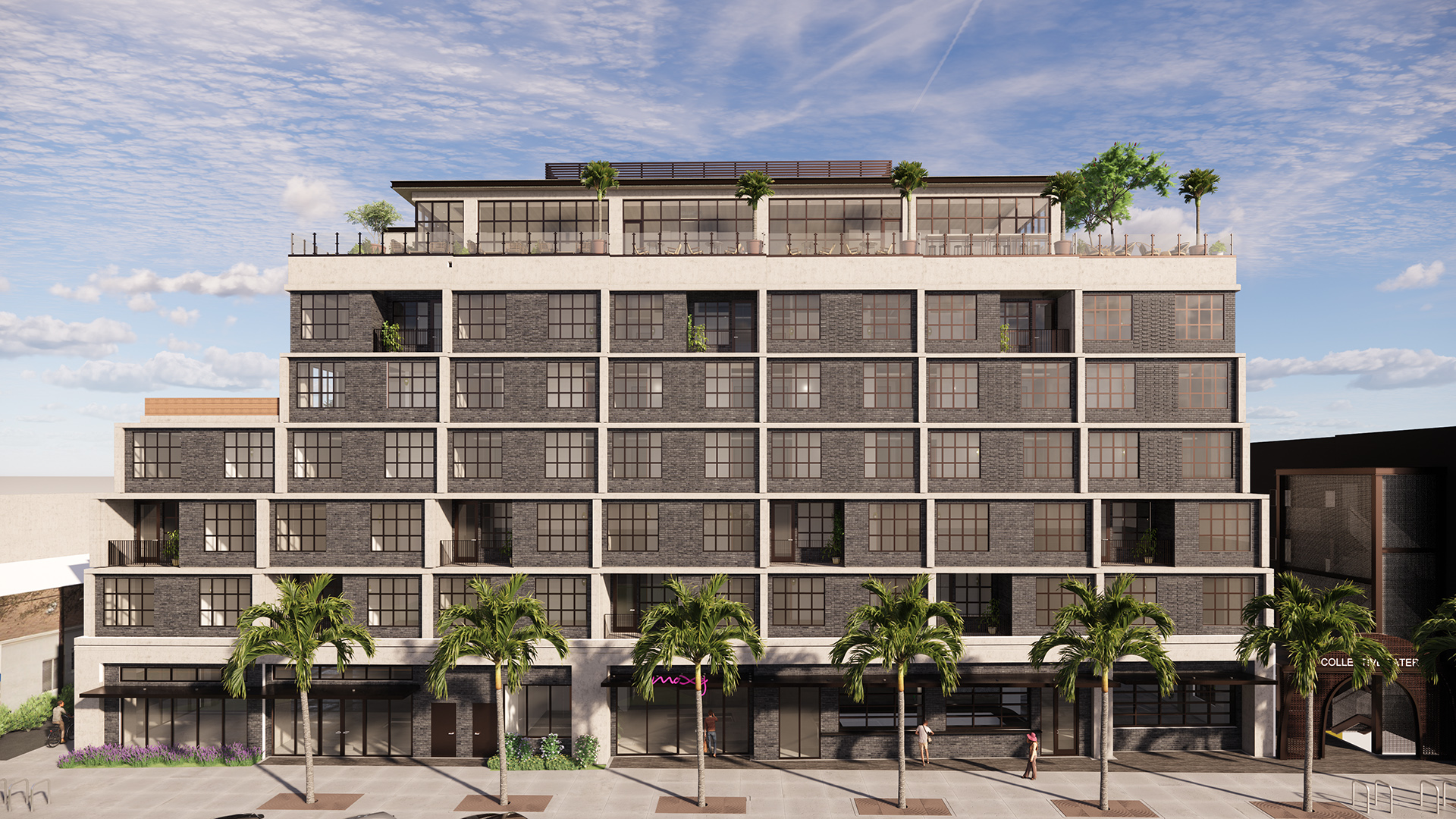
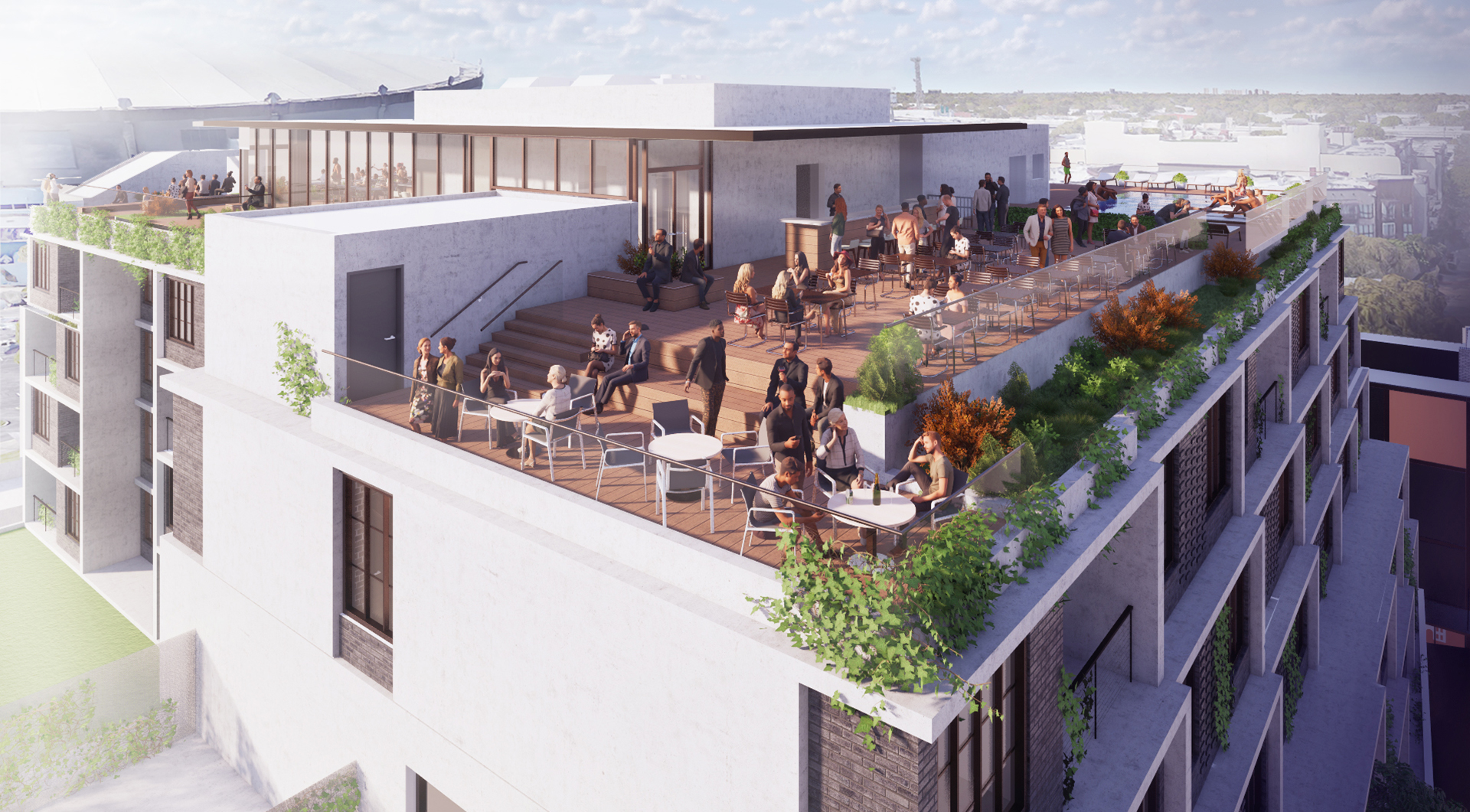
“Our design for the Moxy Hotel at the Collective in St. Petersburg aims to celebrate the city’s architectural heritage with a new building that harmoniously complements its environment. The Moxy’s brick façade thoughtfully steps back to allow room for the lush tree canopies and pedestrian activities along a bustling Central Ave. It exemplifies a sensitivity to urban life. Our approach blends contemporary design with an understanding of human interaction between spaces; the Paseo and courtyards, nestled between the new hotel and the adaptive reuse 1246 Central building, offer a tranquil escape, a convenient shortcut, or access to a vibrant ground- floor activity. Inspired by the Crislip and Snell arcades—spaces that facilitated north-south passage between buildings—our design creates an inviting area for visitors and locals to interact as they traverse the block. It’s crucial to craft spaces that are simultaneously innovative and respectful of their historical contexts, fostering inclusivity and enhancing the identity of the EDGE community.”
-Storyn Studio
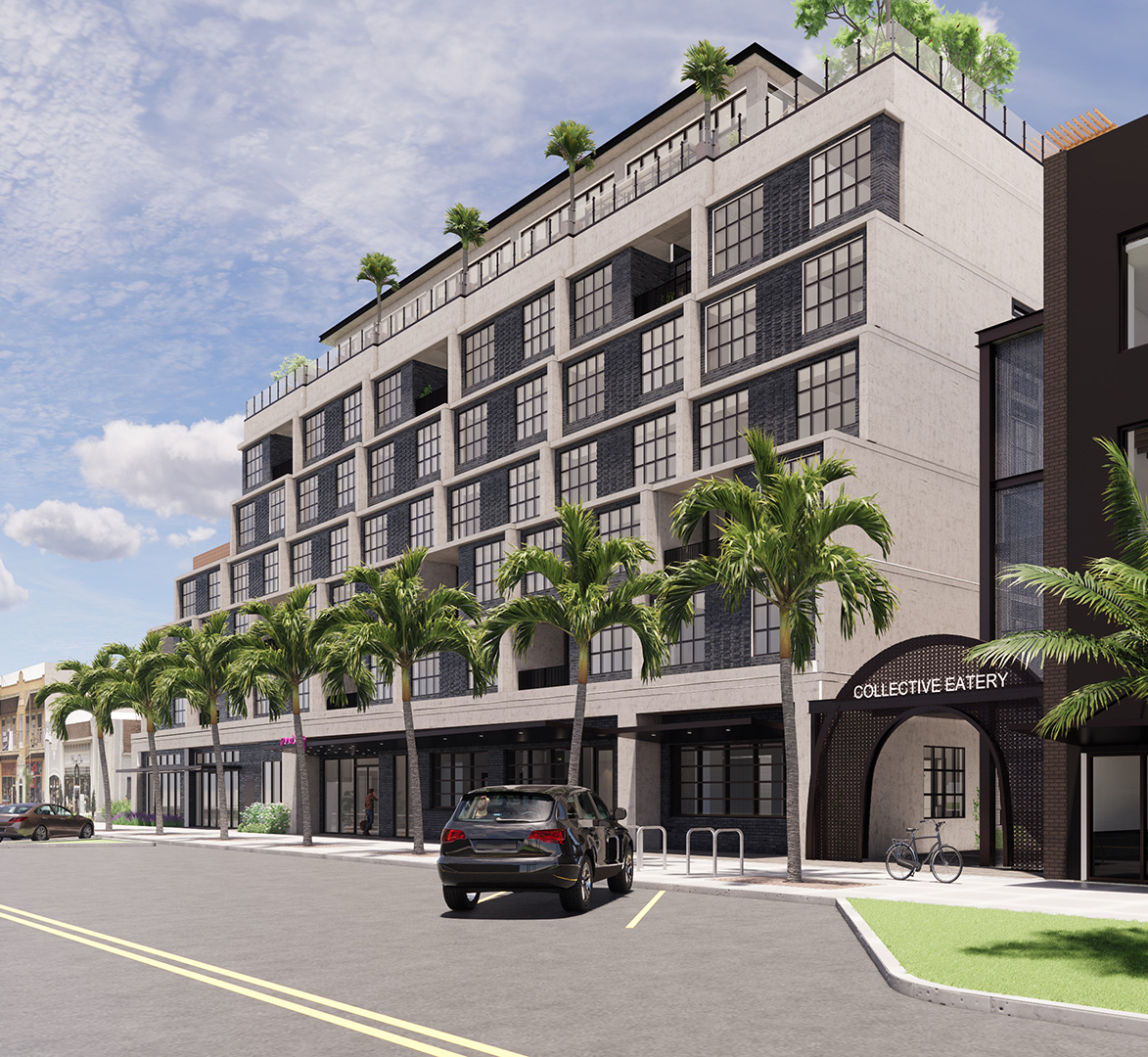
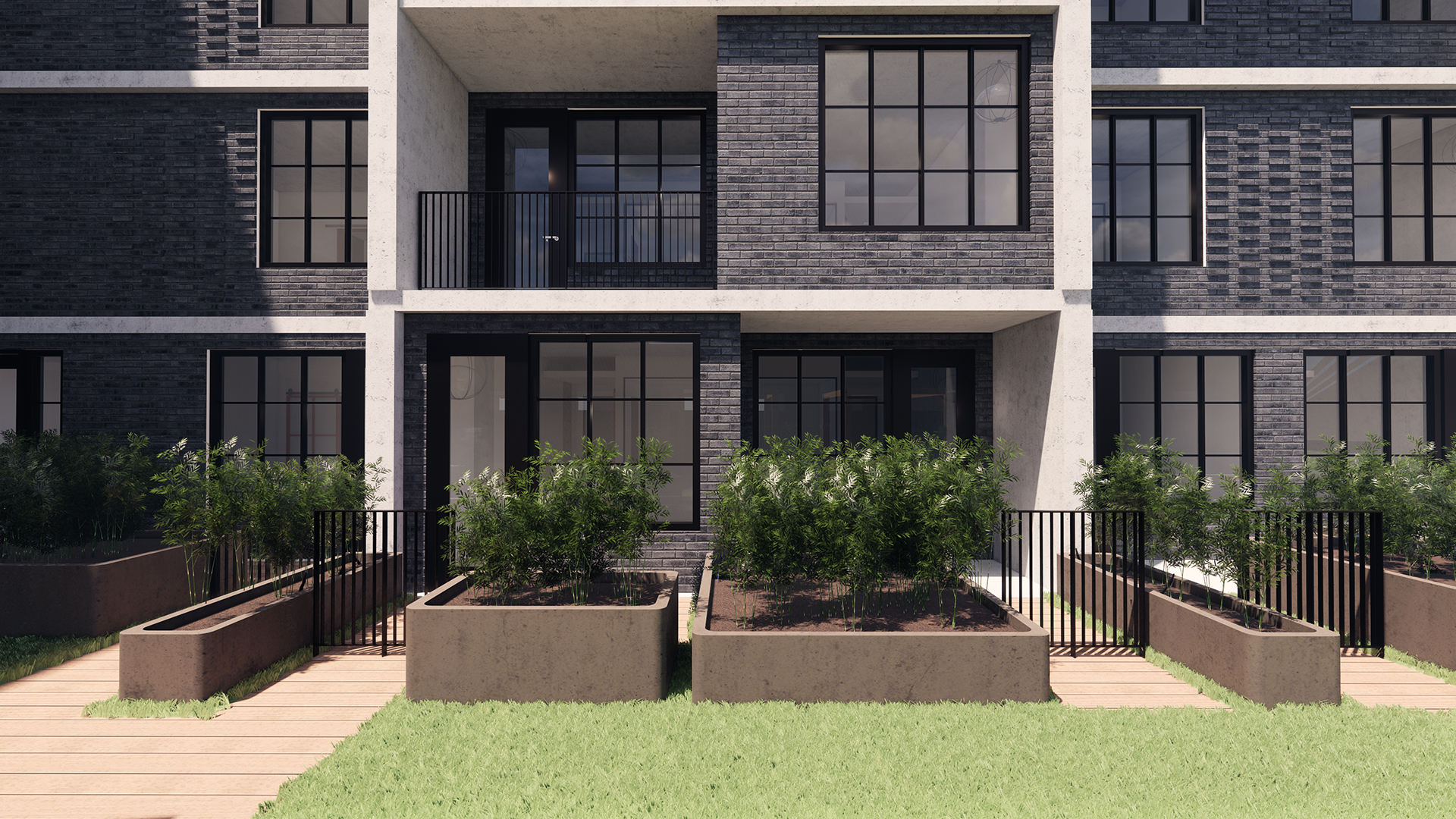
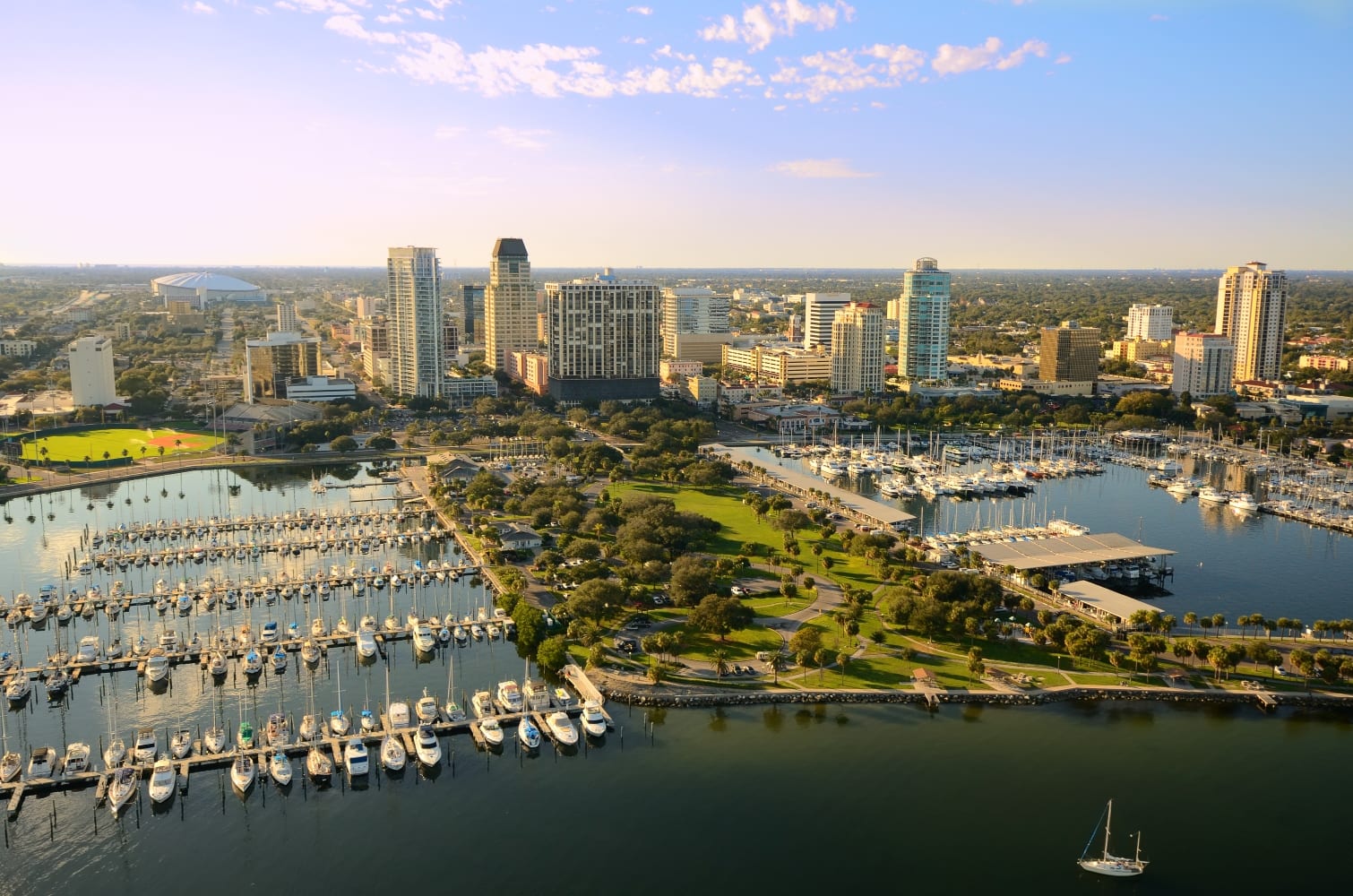
Its Social Imperative: Greenspace is a vital urban amenity in St. Petersburg. 93% of the city is within a half-mile walk of a public park. With community, equity and inclusion in mind, designers of the 1920s felt a responsibility that new developments should balance building volume with social greenspace. The result is Central Avenue, characterized by wide sidewalks and arcades that foster a culture of walkability. This project is conceived as a component of these larger social systems and a continuation of the ethos that generated them.
It gives back to the city in the design of a new public space providing the opportunity for planned visits and chance encounters alike. Additionally, it relies on a highly articulated façade of surfaces pushed and pulled to break up the primary mass of the building, giving it an intimate, human proportion that effectively frames the street and engages it as an active public space. Architecture like that of the Moxy Hotel, food hall, and co-working spaces enable St. Petersburg, and the Collective Development, to be thriving, vibrant places of public life.
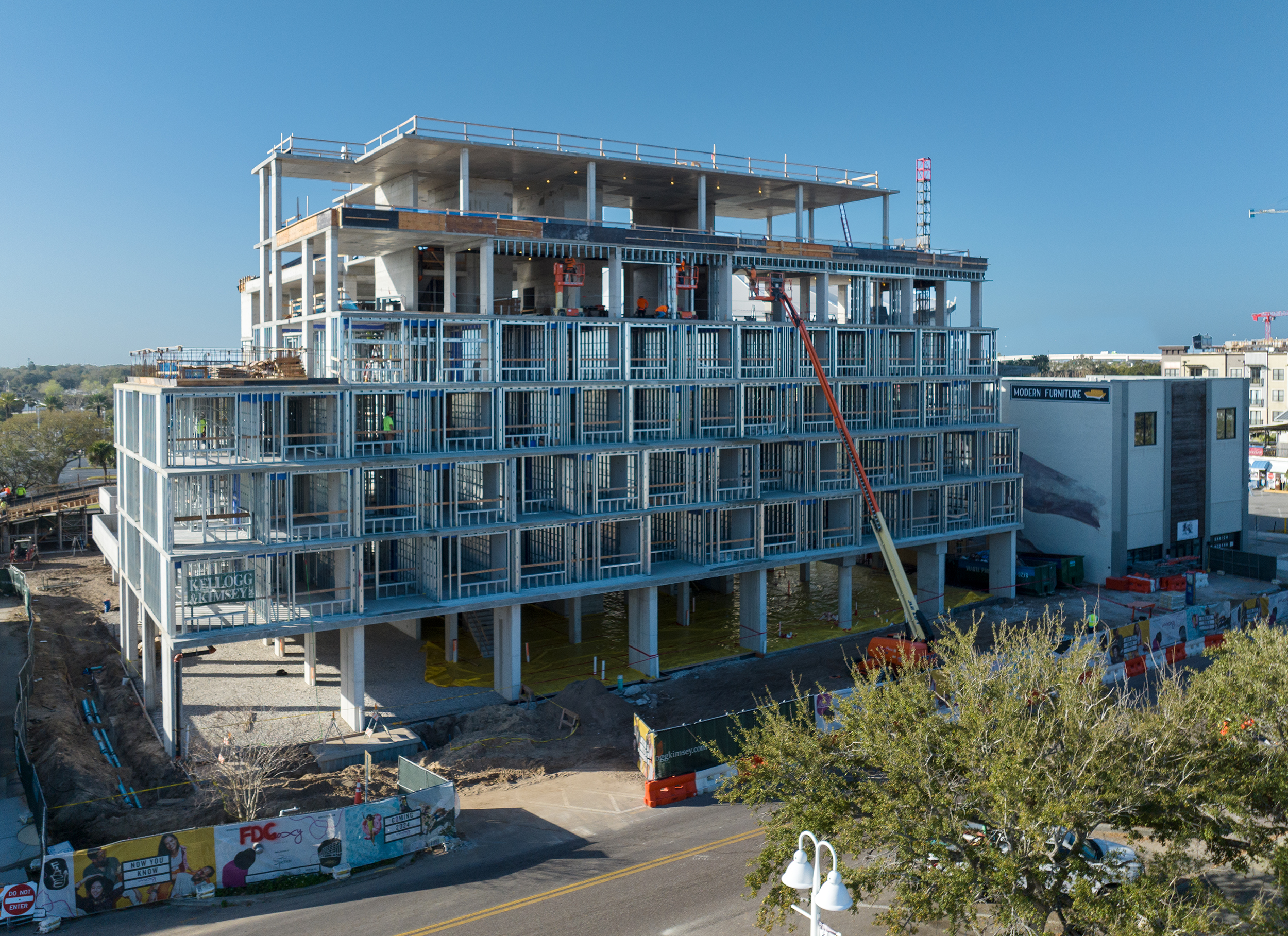
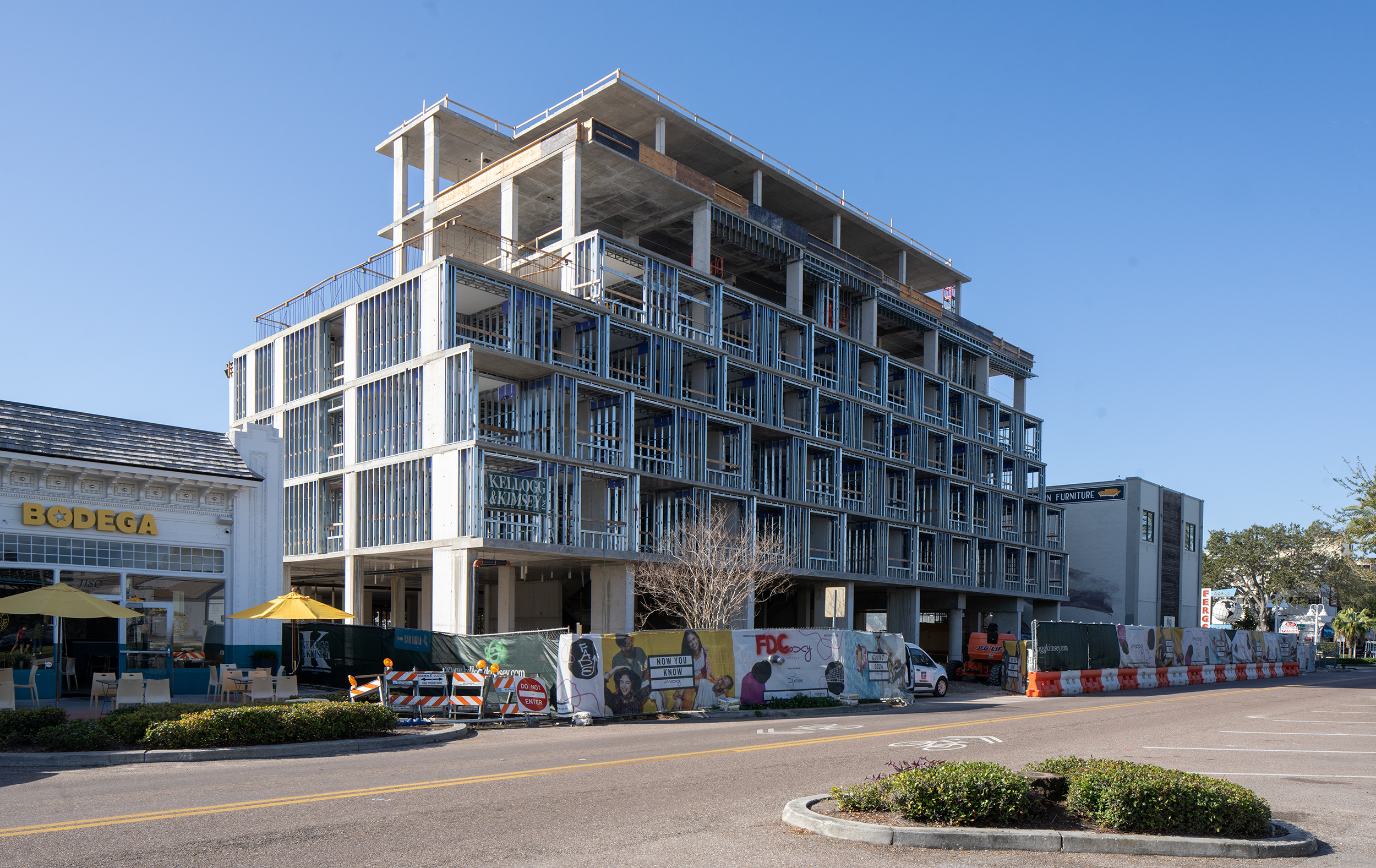
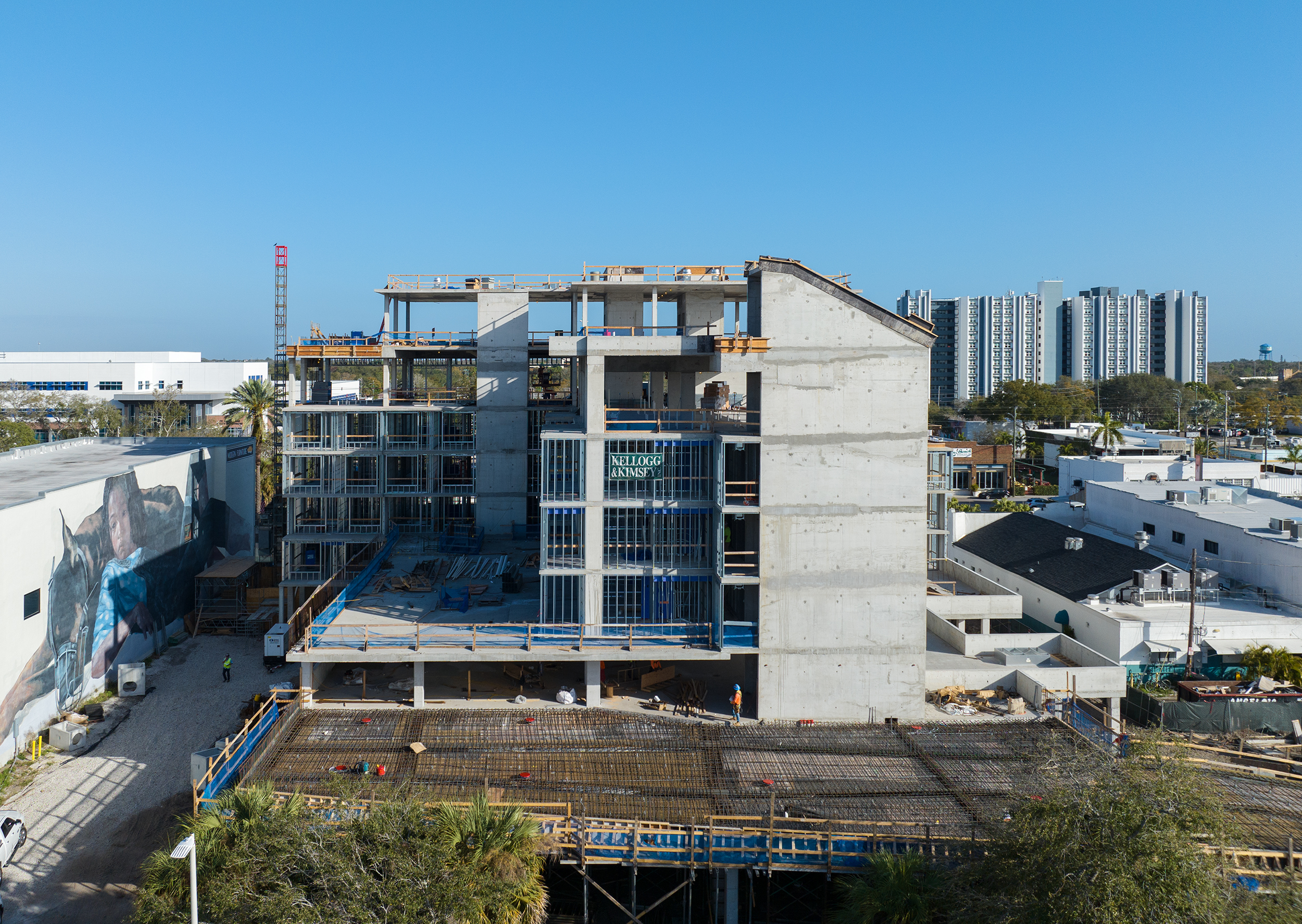
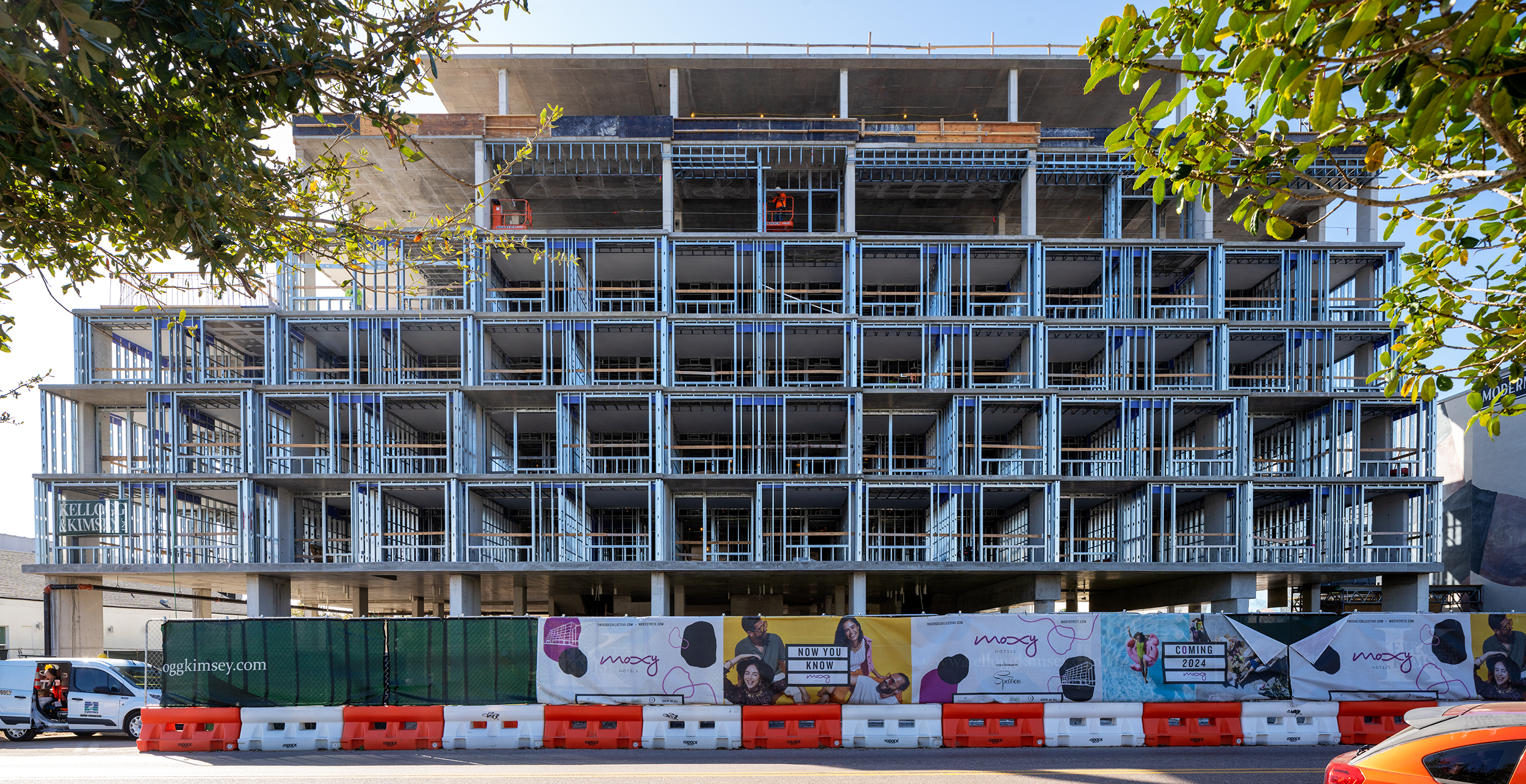
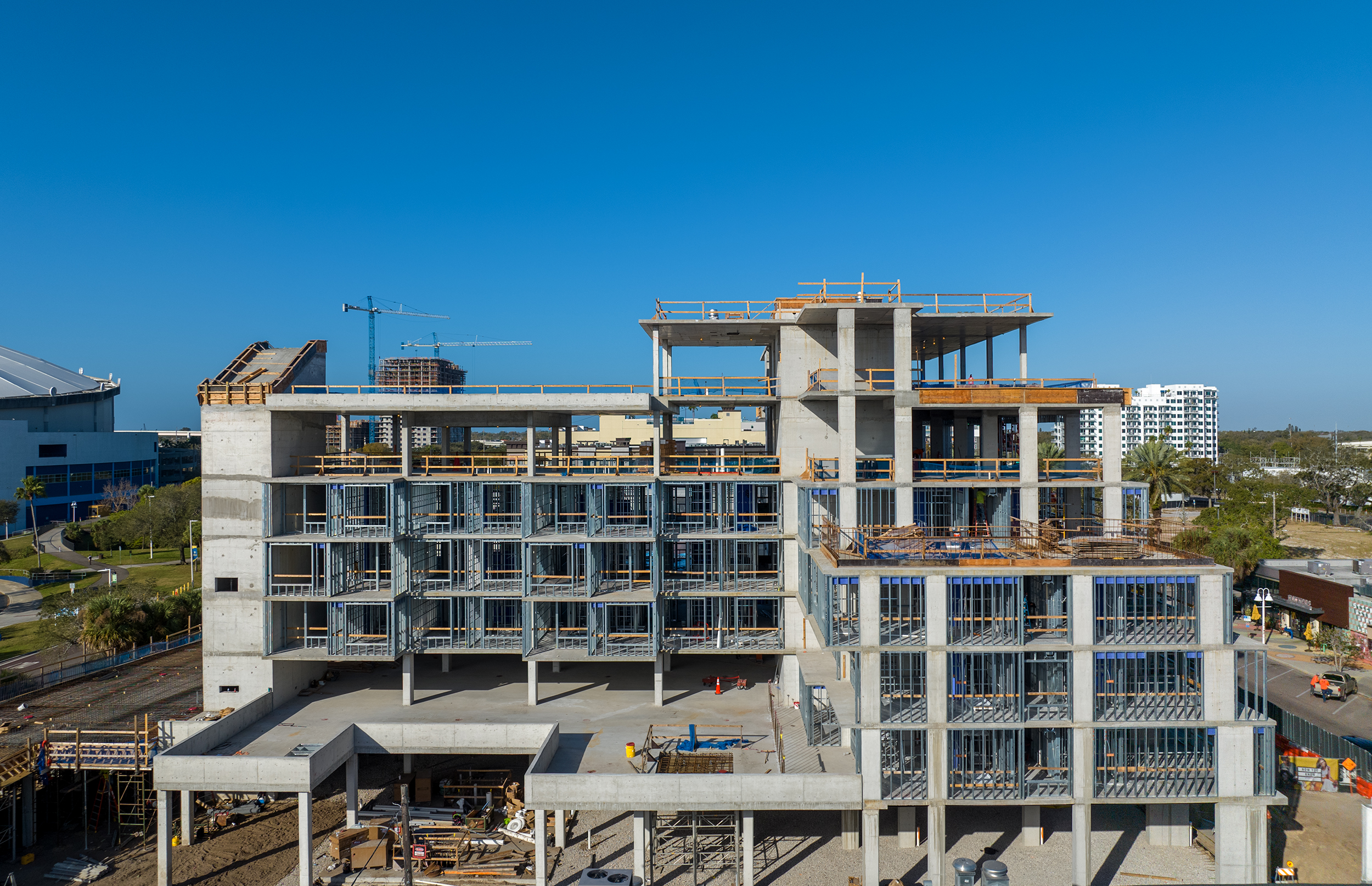

Its Place in Time: The project’s massing directly references the 1920’s Central Avenue plan in its scale and presence along the street, while the material palette and urban character position it as a current contribution to the broader disciplinary discourse. A main priority is the thoughtful and strategic consideration of architecture’s role in structuring the public life of the city. The traditional walkability and arcades of the 1920s urban scheme are translated and updated in the porosity of the street-level façade. The scale of the existing architecture, and traditional small-business programming that has defined the social space of the street is retained in the modulation of the building mass. From the interior, ample transparency provides sweeping views while an arrangement of layered planes provides situational seclusion. Whether inside or out, an occupant is positioned as an active participant in the urban life of the neighborhood.
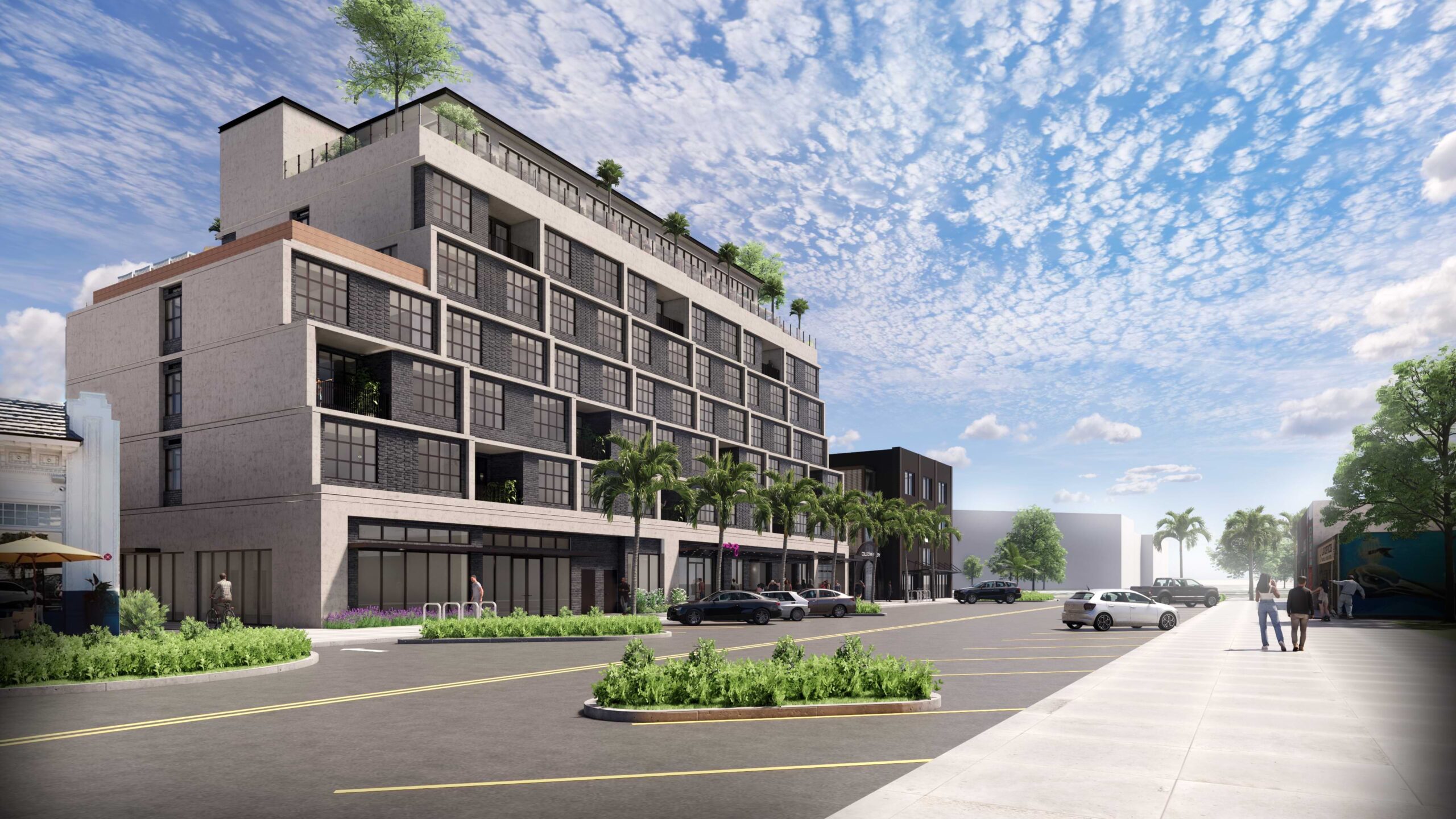
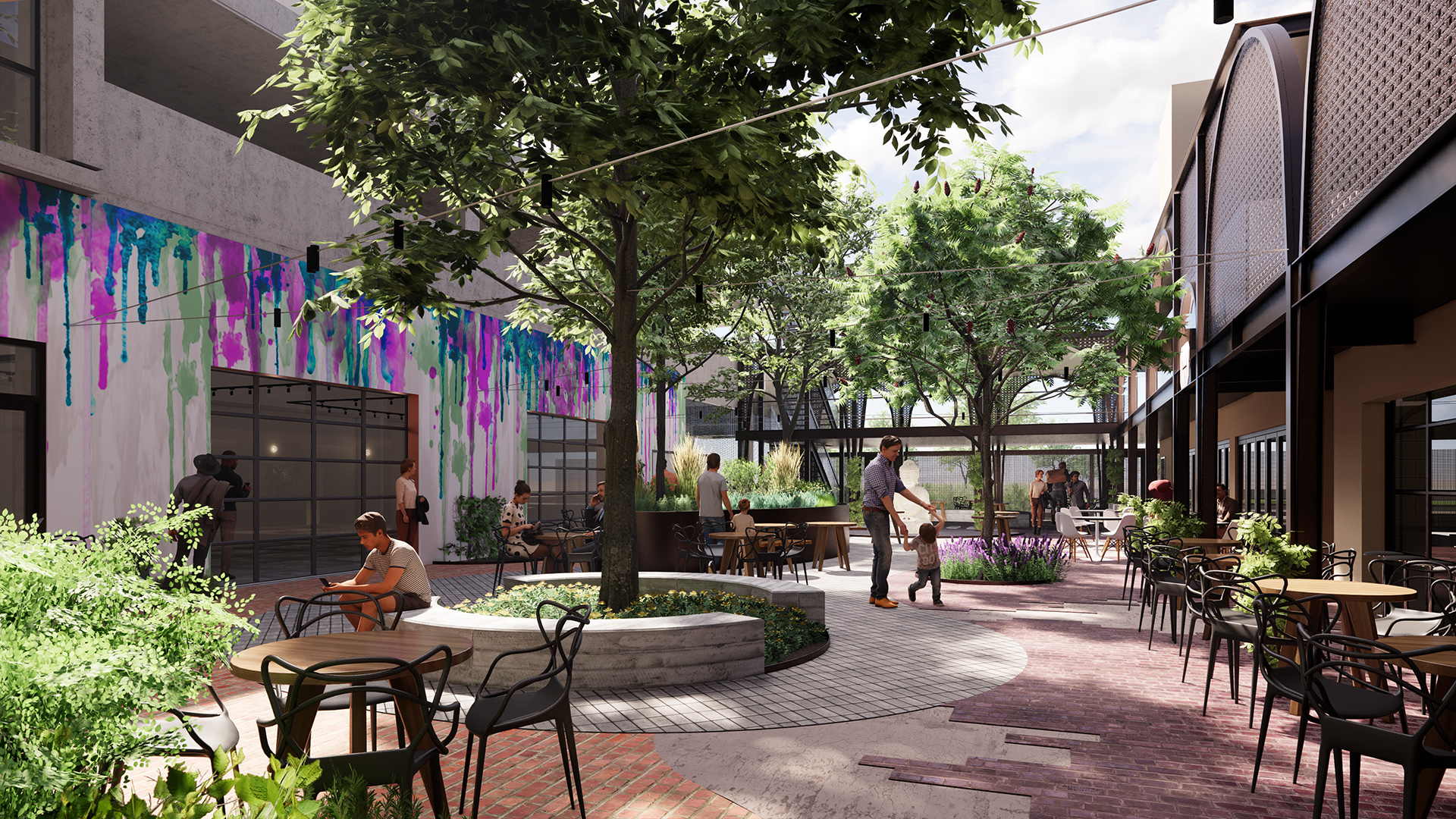
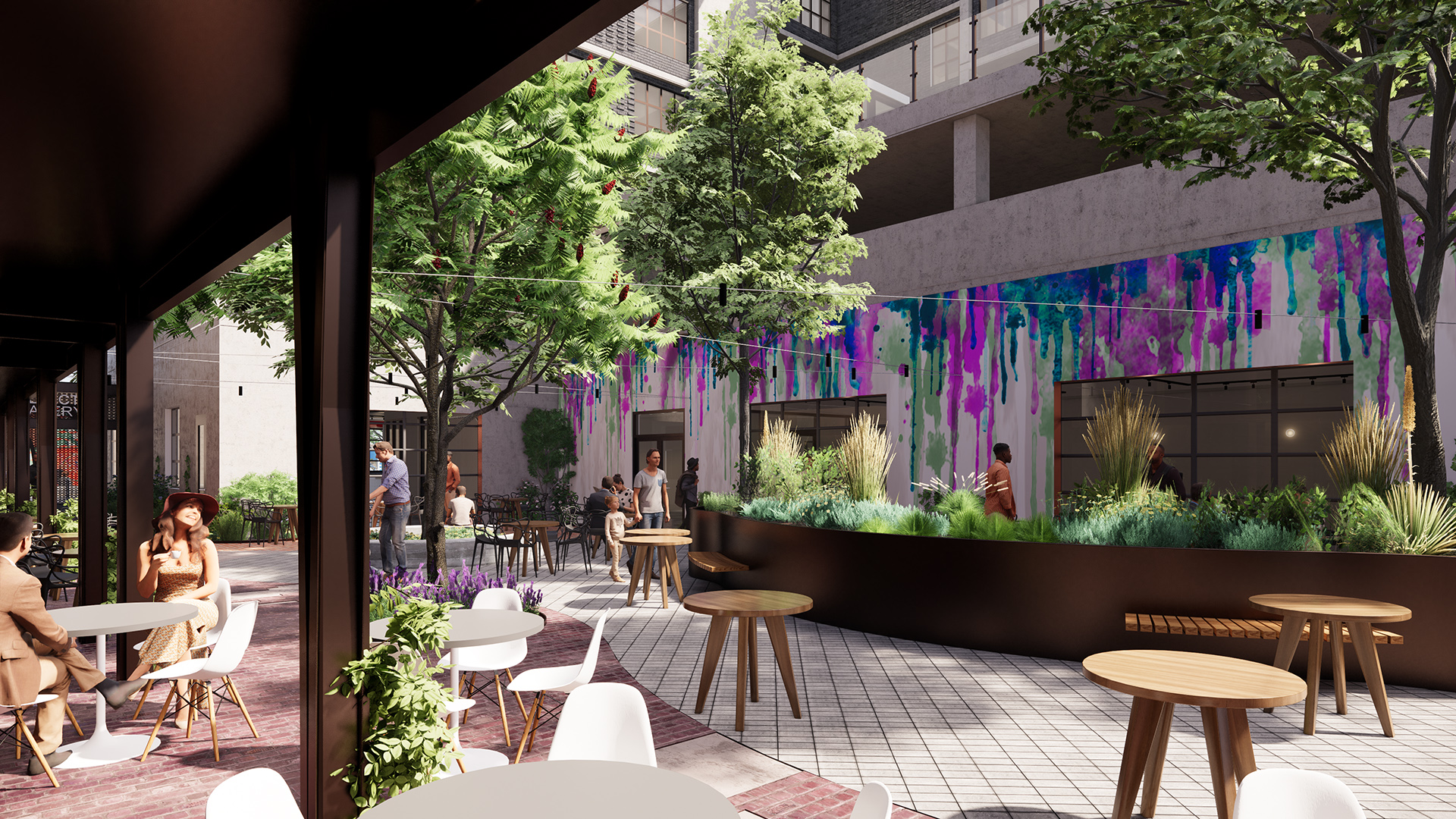
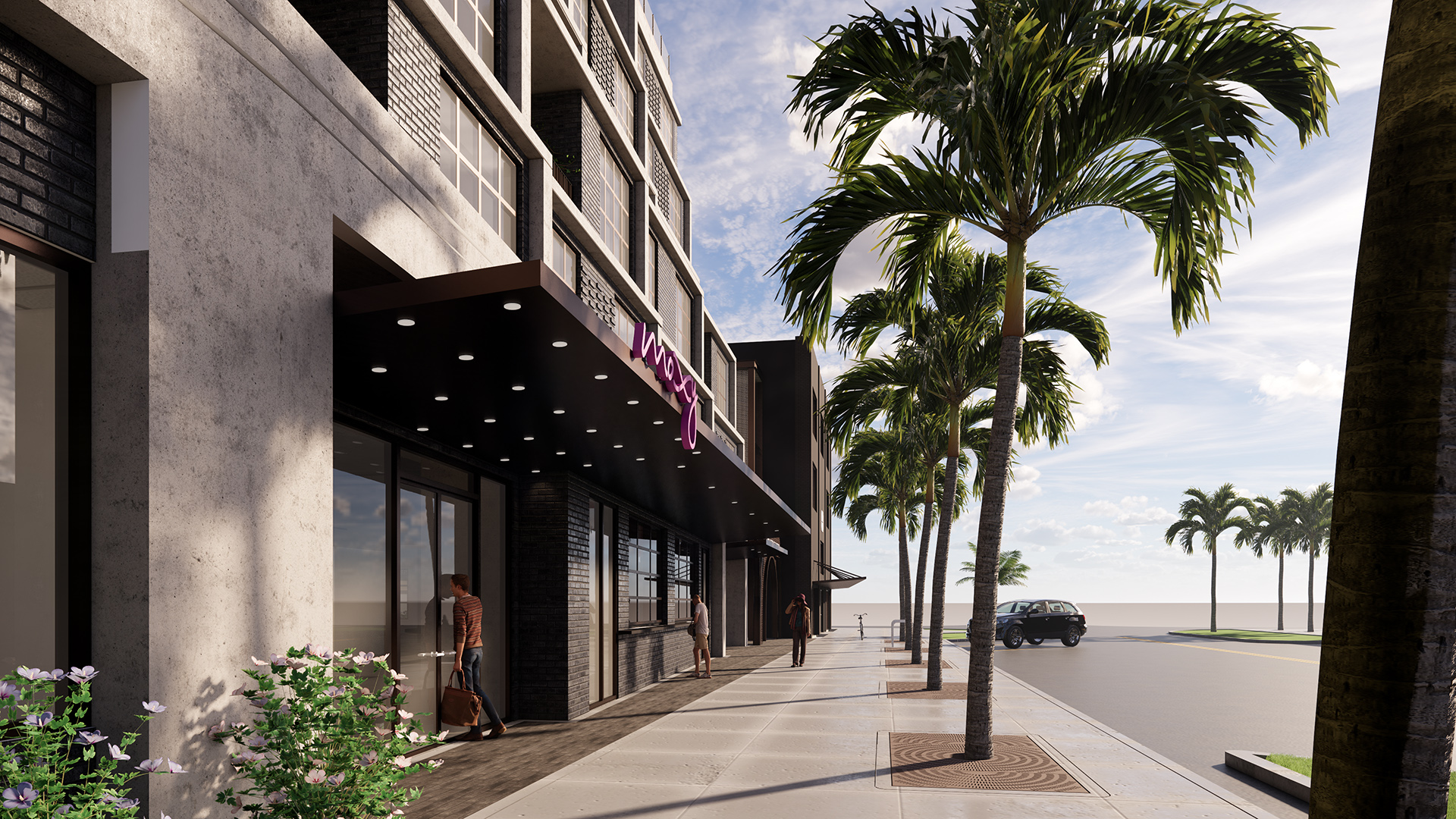
Its Forward Vision: The project interprets the history and culture of place to inform its design. The result is an architecture that is as much forward-looking as it is sensitive to its past. It is a contribution that satisfies the current needs of its place. It also represents a clear vision – an exemplar – for what St Petian development will become over time.
It considers the scale of its neighborhood and takes special care to preserve the intimacy and individuality of those spaces. It accomplishes this without sacrificing the advantages brought by dense development. In striking this balance it helps define a unique architecture that is distinctly St. Petersburg and stands as evidence of architecture’s capacity to direct urban growth.
NEXT PROJECT
